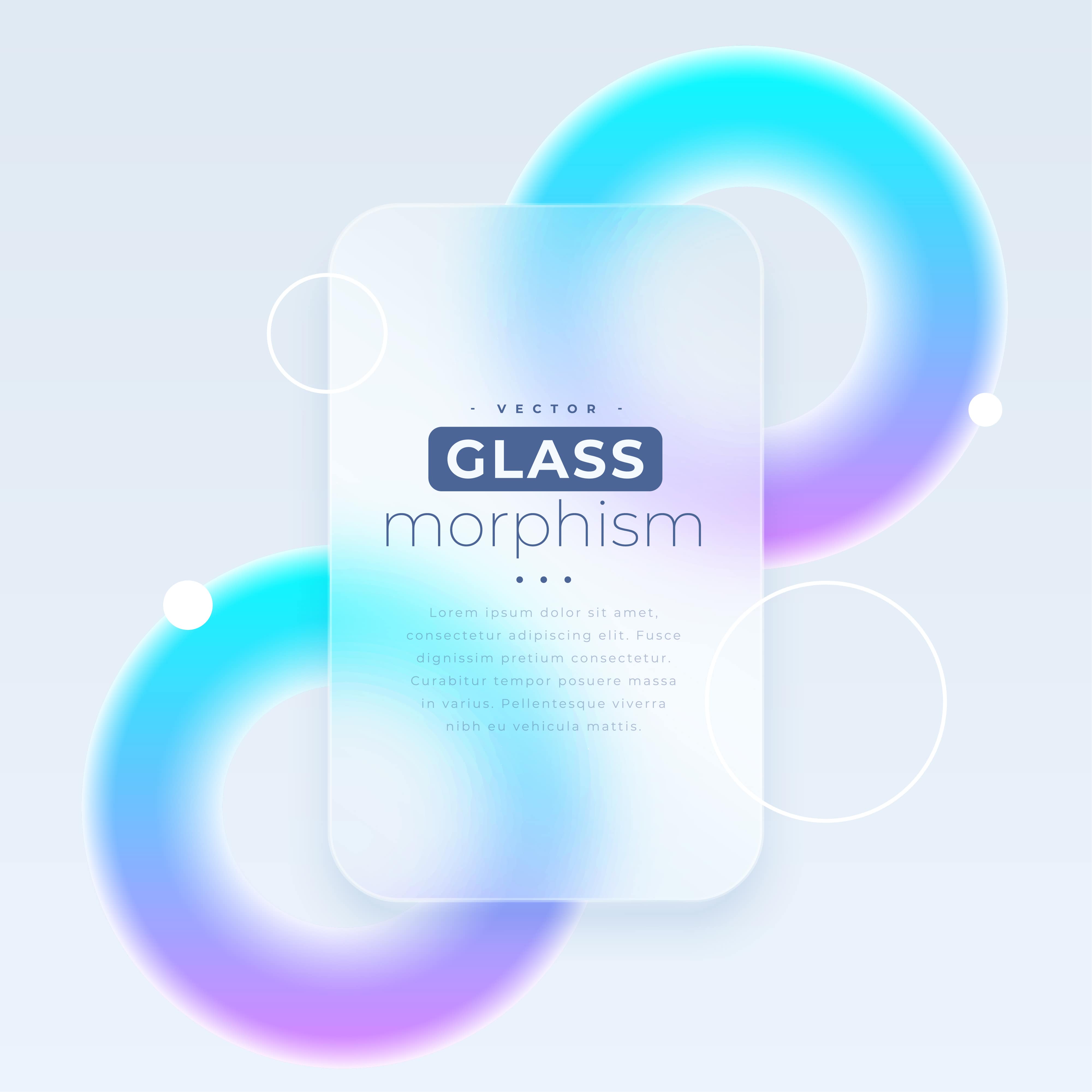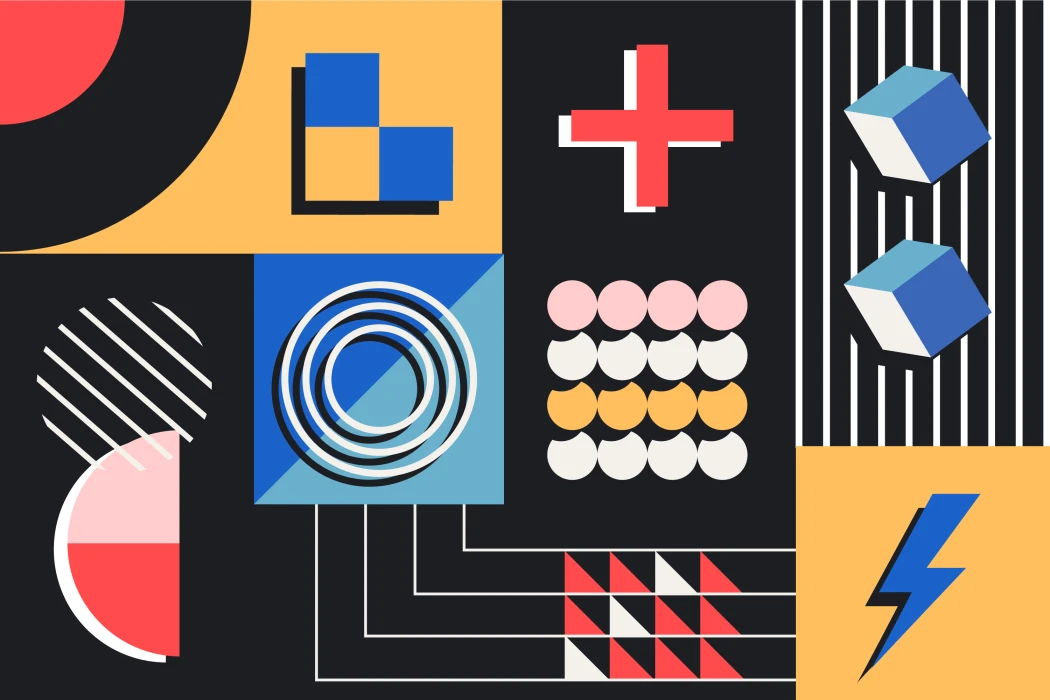In a scenario of constant change, keeping up is not just a choice, but a necessity. As we enter 2024, the field of user experience (UX) and user interface (UI) design continues to witness transformative changes.
Introduction
The UX/UI design trends are ready to revolutionize the way we perceive and engage with digital interfaces. This article looks at some of the emerging trends that are set to dominate the world of design in 2024.
1 - Glass morphism
This design approach transforms traditional solid, opaque screens into modern, translucent interfaces, offering a sense of freshness and transparency that stands out from flat designs.
In addition to its aesthetic appeal, Glassmorphism introduces a sense of futuristic design by incorporating fully transparent backgrounds with subtle blurred glass effects. The resulting layered appearance not only creates visual interest, but also serves to draw attention to important information, making it an impactful option for designers who want to strike a balance between form and function. To ensure inclusivity, it is essential to test the contrast of colors, emphasizing the commitment to making Glassmorphism accessible to all users.

2 - Dark Mode
Dark Mode transcends its initial practicality, going far beyond its utilitarian roots. Originally adopted to reduce eye strain and optimize battery performance, dark mode has evolved into a symbol of sophistication, adding a touch of elegance to digital interfaces.
Its prevalence across multiple platforms, spanning mobile apps, websites and desktop applications, marks a paradigm change in which user preferences dictate design choices.
The seamless integration of Dark Mode not only enhances the visual immersion experience, especially in low light conditions, but has also become an integral aspect of user-centered design.
3 - Sustainability
In response to the growing prominence of environmental concerns, sustainability has emerged as a primary consideration, and it is necessary to align user experiences with environmental awareness.
Designers are moving towards creating interfaces that allow users to perform tasks quickly and smoothly. This shift involves eliminating unnecessary data, minimizing unnecessary animations, pages and content. As well as implementing eco-friendly color schemes, such as dark mode, and integrating features that encourage users to adopt eco-conscious behavior.
4 - Gamification
This strategy, characterized by the integration of game-like elements, not only promotes user engagement and motivation, but also introduces an element of friendly competition that significantly affects user retention.
By tapping into the innate human desire for challenge and achievement, it elevates the overall digital journey and contributes to ongoing user engagement.
To find out more about gamification, read our article on the subject.
5 - Motion Design
Motion design will continue to be a captivating force that goes beyond mere aesthetics. Creative movements play a fundamental role not only in improving the usability of interfaces, but also in including attractive details that broaden the emotional appeal.
By adding dynamism and interactivity to static elements, motion design transforms the user experience into an intuitive and engaging journey, increasing the sense of immersion and pleasure.
From subtle transitions to fun animations, motion design captivates users, guiding them through interfaces with fluidity.
6 - Micro-interactions
Micro-interactions are powerful elements that enrich the overall user experience. Although they may not be the center of attention, micro-interactions, such as animated buttons and smooth transitions, play a crucial role in guiding users through interfaces.
These details elevate the overall experience by providing instant feedback and guidance, making applications and websites not only functional, but also fun and engaging to use.
From small reactions to inputs to animation that adds personality, microinteractions make a significant difference to user satisfaction, demonstrating the importance of attention to detail in creating memorable digital experiences.
7 - Accessibility
Accessibility remains a key concern, emphasizing the importance of designing digital products that can be used by people with disabilities. Following the guidelines provided by the WCAG (Web Content Accessibility Guidelines), designers prioritize inclusion as a fundamental principle of user-centered design.
This involves ensuring that interfaces are accessible to all users, including those with disabilities, through features such as screen readers, keyboard navigation and high-contrast options, promoting a digital environment that is truly inclusive and meets the diverse needs of users.
8 - Typography
Typography takes center stage as one of the main trends, with designers adopting large, bold and capital letters to make a statement. Large-scale typography is not just about conveying text, but about establishing a distinct visual identity for digital products.
It is now treated as a fundamental element of design, beyond the transmission of common texts. By using unique fonts to reinforce brand identity and create visually captivating interfaces, typography starts to capture the user's attention, injecting personality and establishing a clear visual hierarchy, ensuring that the message resonates effectively with users. Take a look here: https://gehry.getty.edu/
9 - Voice User Interface
Voice User Interface continues its upward trajectory, offering users the perfect option to interact with the application's functionalities through natural language. This interface allows users to control their devices effortlessly, it is a hands-free interaction that is accessible to different types of users. In addition to reducing time and facilitating cross-platform interactions, VUIs allow users to accomplish more with less effort.
10 - AI Integration
In 2024, artificial intelligence (AI) continues to revolutionize the UX/UI scene, leveraging advanced algorithms to analyze user data and behavior, providing valuable insights for designers.
This wealth of information allows designers to create more user-centric and data-driven designs, improving personalization, automation and accessibility in digital interfaces.
AI-driven design helps digital experiences to be tailored in the right way for each user, making challenging tasks easier.
Conclusion
As we enter the year 2024, these trends not only reflect the current state of the industry, but also point to the future of digital design.
In the middle of this dynamic scenario, it is crucial not only to recognize current trends, but also to remain flexible to embrace new and emerging ones throughout the year. Keeping a close eye on these and other trends that may emerge is essential to ensure that designers are prepared to respond quickly and effectively to the constantly evolving demands of users and the market.
By incorporating these trends into their design practices, professionals not only meet user expectations, but also shape the way we interact and connect with the digital world.
Tags
Subscribe to
Our
Newsletter
Join 1,000+ people and recieve our weekly insights.

Success!
Thank your for subscribing to Buzzvel's
Newsletter, you will now
receive
amazing
tips
and insights weekly.




